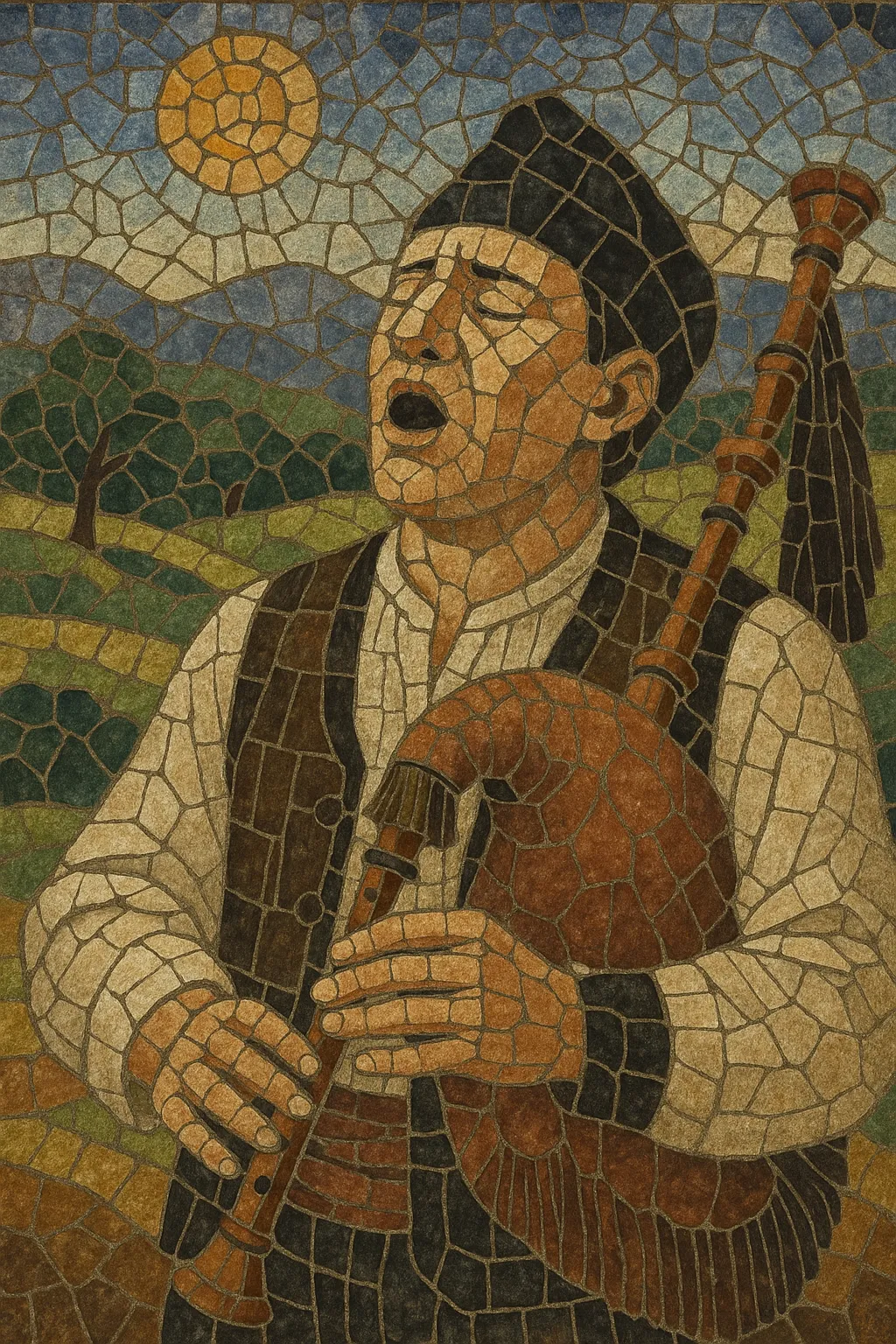Tonada asturiana (also called asturianada or canción asturiana) is a traditional solo vocal style from Asturias, in northern Spain. It is characterized by a powerful, sustained vocal line with abundant melismas, portamenti, and ornamental turns, often in a high tessitura.
Songs are sung in Asturian or Spanish and typically explore themes of love, nostalgia, nature, work, and local life. Performances are frequently a cappella, though accompaniment by gaita asturiana (bagpipe), piano, guitar, or small folk ensembles (bandina) is also common. The style favors free or flexible rhythm shaped by the singer’s phrasing and breath, with cadential climaxes and dramatic dynamic swells.
Tonada asturiana is both a community practice—kept alive in taverns, festivals, and local gatherings—and a competitive art, sustained by well-known regional contests and professional interpreters.
Tonada asturiana descends from older Iberian and Asturian vocal traditions, consolidating in the 19th century as a distinctive local art of solo, highly ornamented singing. Its melismatic phrasing, modal inflections, and free rhythmic delivery reflect the deep regional singing culture of Asturias, while its themes—love, longing, work, and the landscape—anchor it in everyday life.
In the early-to-mid 20th century, the genre moved from informal community spaces into theaters, radio, and organized competitions. Local and regional contests helped codify vocal technique, favored repertoires, and performance standards, while recordings by star singers carried the tonada beyond Asturias. Accompaniment expanded from purely a cappella delivery to include gaita asturiana, piano, and small ensembles, without displacing the voice as the expressive center.
Cultural revival movements and regional media in the late 20th and early 21st centuries invigorated the tradition. New generations of singers—some with classical training—have preserved the traditional idiom while experimenting with arrangement and instrumentation. Competitions, festivals, and dedicated associations continue to sustain the repertoire and technique, and the tonada remains a living emblem of Asturian identity.
Start with a solo vocal line placed comfortably high for the singer, allowing sustained notes that can bloom in volume and color. Aim for a ringing, forward tone capable of dynamic swells and expressive climaxes.
Write melodies that are lyrical, stepwise, and melismatic, with frequent portamenti, appoggiaturas, and turns. Favor modal color (often Dorian or Aeolian inflections) and prepare cadences that resolve after expressive, drawn-out approaches. Ornamentation should feel organic to the phrase rather than purely virtuosic.
Although some tonadas can be set over a pulse, prioritize rubato and breath-shaped phrasing. Let the text dictate pacing, allowing ritardandi at cadences and slight accelerandi in speech-like passages. Think of the voice “leading” any accompaniment.
Set lyrics in Asturian (or Spanish) that revolve around love, longing, memory, nature, and everyday Asturian life. Keep lines vivid and concrete; imagery of mountains, mines, sea, and villages situates the song culturally.
While a cappella delivery is idiomatic, you can add:
• Gaita asturiana (bagpipe) for local color—use drones and sustained counter-lines. • Piano or guitar for supportive, sparse harmony (open fifths, pedal tones, and gentle modal progressions). Avoid busy figurations; the voice must remain primary. • Small bandina (accordion, tambor, etc.) for traditional timbres. Keep textures transparent.Use strophic or strophic-variation form with recurrent refrains. Build each verse toward a vocal apex, then relax into the cadence. In performance, prioritize textual clarity, controlled vibrato, and tasteful, idiomatic ornamentation.


